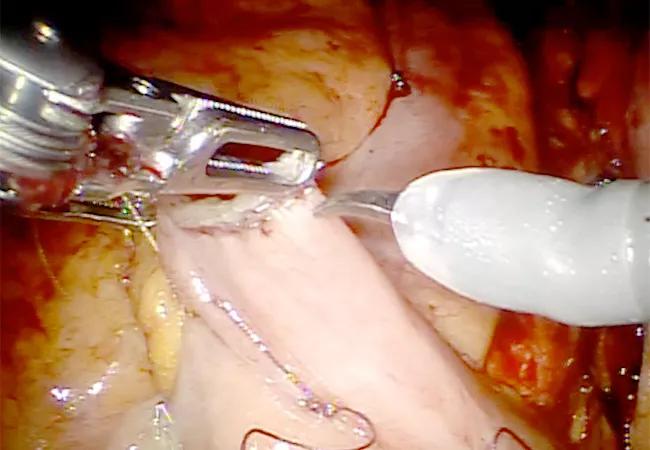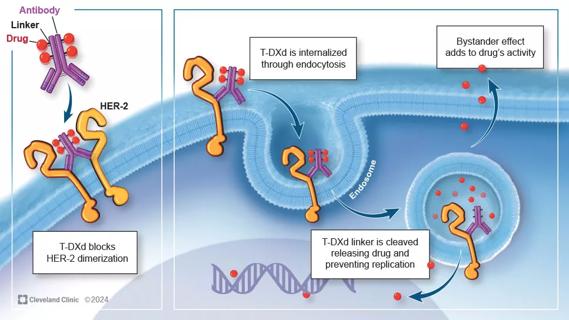Case presentation shows techniques

While open radical cystectomy remains the gold standard for surgical management of muscle-invasive high-grade bladder cancer, robot-assisted cystectomy with intracorporeal conduit diversion is gaining traction in high-volume centers of excellence.
Advertisement
Cleveland Clinic is a non-profit academic medical center. Advertising on our site helps support our mission. We do not endorse non-Cleveland Clinic products or services. Policy
Successful execution of this complex procedure requires an experienced surgical team, including a bedside surgical assistant skilled in laparoscopic technique, stapler mechanics and functionality, handling of the guide wire and ureteral stents, and using the instruments to improve the console surgeon’s visualization.
This video from Cleveland Clinic Glickman Urological & Kidney Institute’s Center for Robotic and Laparoscopic Surgery provides guidance and tips on performing robotic cystectomy with intracorporeal conduit diversion, highlighting the bedside surgical assistant’s role. The center has one of the world’s largest groups of surgeons with experience in urologic laparoscopic and robotic surgery and is respected for innovative surgical procedures and patient care.
The narrated video, with detailed illustrations and operative footage, covers port placement options and surgical process, including stapling and suturing technique. Contributing surgeons include Georges-Pascal Haber, MD, PhD, Chair of the Department of Urology, and Jihad Kaouk, MD, Director of the Center of Advanced Robotic and Image-Guided Surgery at the Glickman Urological & Kidney Institute, as well as several urology residents and fellows.
To learn more about the groundbreaking work Glickman Urological & Kidney Institute clinicians are performing, watch this video of robotic-assisted radical cystectomy with intracorporeal neobladder formation. Surgeons are also working tirelessly to improve robotic radical cystectomy processes and outcomes as well as working with Cleveland Clinic biomedical engineers to improve techniques and outcomes. A three-way comparison of radical cystectomy approaches in bladder cancer surgeries explores whether differences exist in patient outcomes depending upon the chosen approach. Researchers are also analyzing how socioeconomic factors impact mortality in cystectomy patients.
Advertisement
Advertisement

First-of-its-kind research investigates the viability of standard screening to reduce the burden of late-stage cancer diagnoses

Global R&D efforts expanding first-line and relapse therapy options for patients

Study demonstrates ability to reduce patients’ reliance on phlebotomies to stabilize hematocrit levels

A case study on the value of access to novel therapies through clinical trials

Findings highlight an association between obesity and an increased incidence of moderate-severe disease

Cleveland Clinic Cancer Institute takes multi-faceted approach to increasing clinical trial access 23456

Key learnings from DESTINY trials

Overall survival in patients treated since 2008 is nearly 20% higher than in earlier patients